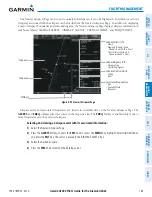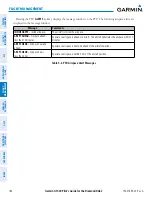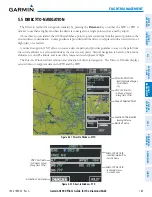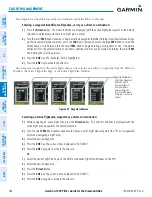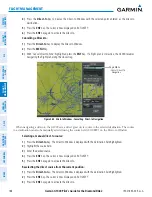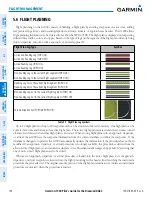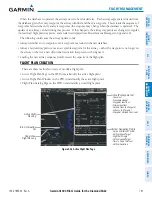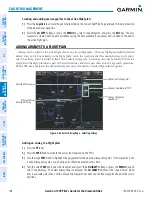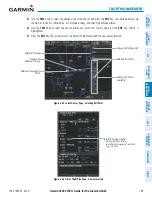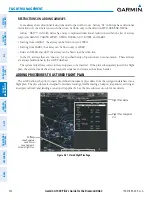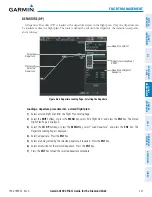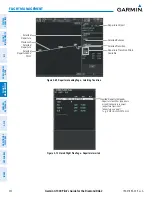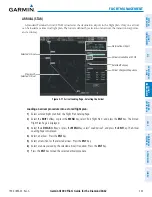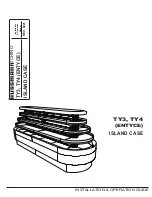
Garmin G1000 Pilot’s Guide for the Diamond DA62
190-01895-00 Rev. A
190
FLIGHT MANAGEMENT
SY
STEM
O
VER
VIEW
FLIGHT
INSTRUMENTS
EIS
AUDIO P
ANEL
& CNS
FLIGHT
MANA
GEMENT
HAZARD
AV
OID
ANCE
AFCS
ADDITIONAL FEA
TURES
APPENDICES
INDEX
5.6 FLIGHT PLANNING
Flight planning on the G1000 consists of building a flight plan by entering waypoints one at a time, adding
waypoints along airways, and inserting departures, airways, arrivals, or approaches as needed. The G1000 allows
flight planning information to be entered from either the MFD or PFD. The flight plan is displayed on maps using
different line widths, colors, and types, based on the type of leg and the segment of the flight plan currently being
flown (departure, enroute, arrival, approach, or missed approach).
Flight Plan Leg Type
Symbol
Active non-heading Leg (TOPO On)
Active non-heading Leg (TOPO Off)
Active heading Leg (TOPO On)
Active heading Leg (TOPO Off)
Non-heading Leg in the current flight segment (TOPO On)
Non-heading Leg in the current flight segment (TOPO Off)
Heading Leg not in the current flight segment (TOPO On)
Heading Leg not in the current flight segment (TOPO Off)
Non-heading Leg not in the current flight segment (TOPO On)
Non-heading Leg not in the current flight segment (TOPO Off)
Turn Anticipation Arc (TOPO On/TOPO Off)
Table 5-7 Flight Plan Leg Symbols
Up to 99 flight plans with up to 99 waypoints each can be created and stored in memory. One flight plan can be
activated at a time and becomes the active flight plan. The active flight plan is erased when the system is turned
off and overwritten when another flight plan is activated. When storing flight plans with an approach, departure,
or arrival, the G1000 uses the waypoint information from the current database to define the waypoints. If the
database is changed or updated, the G1000 automatically updates the information if the procedure has not been
modified. If an approach, departure, or arrival procedure is no longer available, the procedure is deleted from the
affected stored flight plan(s), and an alert is displayed (see Miscellaneous Messages in Appendix A) advising that
one or more stored flight plans need to be edited.
Whenever an approach, departure, or arrival procedure is loaded into the active flight plan, a set of approach,
departure, or arrival waypoints is inserted into the flight plan along with a header line describing the instrument
procedure the pilot selected. The original enroute portion of the flight plan remains active (unless an instrument
procedure is activated) when the procedure is loaded.








